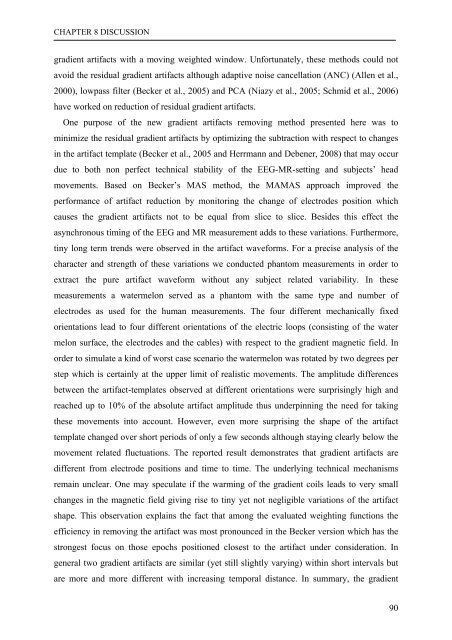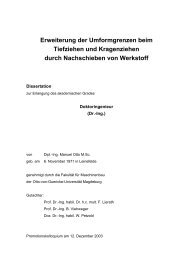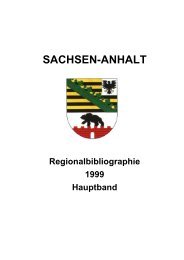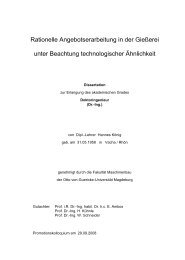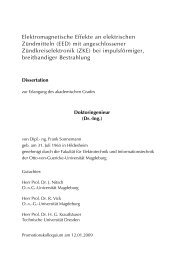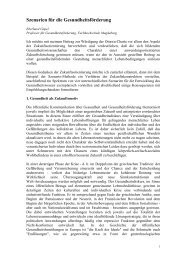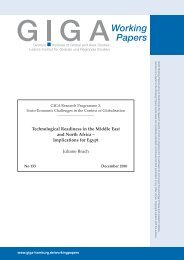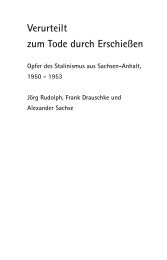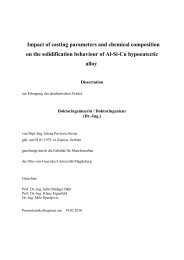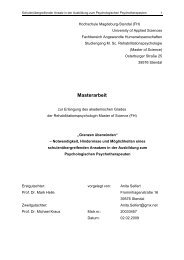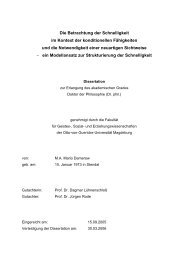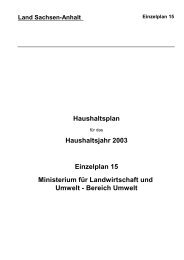Limin_Sun_Thesis_submit.pdf
Limin_Sun_Thesis_submit.pdf
Limin_Sun_Thesis_submit.pdf
Create successful ePaper yourself
Turn your PDF publications into a flip-book with our unique Google optimized e-Paper software.
CHAPTER 8 DISCUSSION<br />
gradient artifacts with a moving weighted window. Unfortunately, these methods could not<br />
avoid the residual gradient artifacts although adaptive noise cancellation (ANC) (Allen et al.,<br />
2000), lowpass filter (Becker et al., 2005) and PCA (Niazy et al., 2005; Schmid et al., 2006)<br />
have worked on reduction of residual gradient artifacts.<br />
One purpose of the new gradient artifacts removing method presented here was to<br />
minimize the residual gradient artifacts by optimizing the subtraction with respect to changes<br />
in the artifact template (Becker et al., 2005 and Herrmann and Debener, 2008) that may occur<br />
due to both non perfect technical stability of the EEG-MR-setting and subjects’ head<br />
movements. Based on Becker’s MAS method, the MAMAS approach improved the<br />
performance of artifact reduction by monitoring the change of electrodes position which<br />
causes the gradient artifacts not to be equal from slice to slice. Besides this effect the<br />
asynchronous timing of the EEG and MR measurement adds to these variations. Furthermore,<br />
tiny long term trends were observed in the artifact waveforms. For a precise analysis of the<br />
character and strength of these variations we conducted phantom measurements in order to<br />
extract the pure artifact waveform without any subject related variability. In these<br />
measurements a watermelon served as a phantom with the same type and number of<br />
electrodes as used for the human measurements. The four different mechanically fixed<br />
orientations lead to four different orientations of the electric loops (consisting of the water<br />
melon surface, the electrodes and the cables) with respect to the gradient magnetic field. In<br />
order to simulate a kind of worst case scenario the watermelon was rotated by two degrees per<br />
step which is certainly at the upper limit of realistic movements. The amplitude differences<br />
between the artifact-templates observed at different orientations were surprisingly high and<br />
reached up to 10% of the absolute artifact amplitude thus underpinning the need for taking<br />
these movements into account. However, even more surprising the shape of the artifact<br />
template changed over short periods of only a few seconds although staying clearly below the<br />
movement related fluctuations. The reported result demonstrates that gradient artifacts are<br />
different from electrode positions and time to time. The underlying technical mechanisms<br />
remain unclear. One may speculate if the warming of the gradient coils leads to very small<br />
changes in the magnetic field giving rise to tiny yet not negligible variations of the artifact<br />
shape. This observation explains the fact that among the evaluated weighting functions the<br />
efficiency in removing the artifact was most pronounced in the Becker version which has the<br />
strongest focus on those epochs positioned closest to the artifact under consideration. In<br />
general two gradient artifacts are similar (yet still slightly varying) within short intervals but<br />
are more and more different with increasing temporal distance. In summary, the gradient<br />
90


